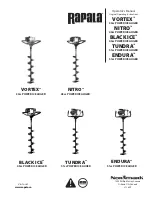
The Sealtech Leak Testing Method
Sealtech 430-R & 430-AL
For professional RV service technicians, one of the most difficult leaks to diagnose are water leaks
penetrating the exterior of the RV. The Number One cause of RV damage is water intrusion!
Any crack in the sealant or a penetration through any exterior surface is a potential leak
that can allow moisture to enter and begin its destructive action.
Oftentimes the leak will manifest itself at a location distant from its actual entry point
and can go unnoticed for an extended period of time. Rather than risk further damage
by flooding the exterior of the coach with water, the safe, sure way of detecting unintended
exterior breaches is to perform a pressurized leak test using the Sealtech 430-R & 430-AL.
This beneficial device permits the shop to offer the Sealtech method as a value-based aftermarket
service, as well as proving its worth during normal PDIs and troubleshooting tasks.
Using the Sealtech 430-R & 430-AL
Since the Sealtech concept uses a positive air pressure inside the
RV, it is necessary to prevent undue loss of pressure through
designed openings in the RV exterior such as doors, windows,
storage bays, vents, etc.
Preparing the RV for Testing
1. Tightly close all doors, windows and 14-inch roof vents,
including all access and bay doors.
(
One 14-inch roof vent will
be required to permit access air to the 430-R & 430-AL)
2. Plug the RV into shore power.
(The 430-R & 430-AL require
a 120-volt AC power source inside the RV)
3. Turn off all fans, blowers and air conditioners.
4. Open the one 14-inch roof vent completely that you want to do your testing in & remove any
device covering that vent if any.
5. Remove interior vent garnish/trim, as well as the crank handle.
6. Remove the screen portion of the roof vent and reinstall the garnish/trim.
1
Setting Up the Sealtech 430R & 430-AL
2
Mechanical Set Up
1. Position the 430-R or 430-AL upper vent mating mechanism and secure it against the ceiling by
connecting the turnbuckle end clasps to the top lip of the roof vent and to the appropriate attachment
point in the mechanism cross member.
3
1
Reinstalling the vent trim/garnish provides ceiling protection and a quality seal.
2
All set-up functions are normally performed from inside the RV, unless equipped with a powered vent or vent cover.
3
Thicker roof dimensions will require the use of the supplied snap ring and possibly one or more chain links.





















